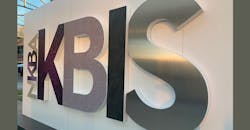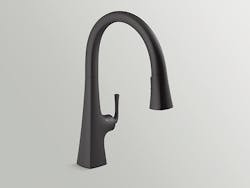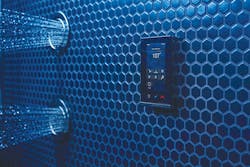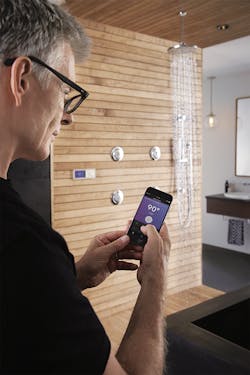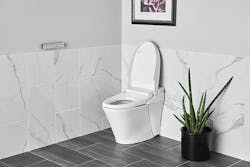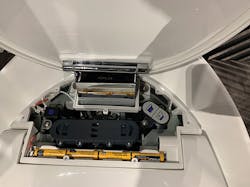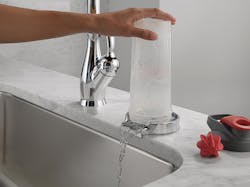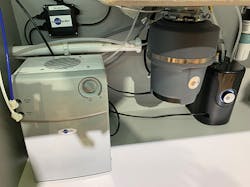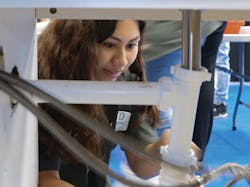LAS VEGAS—Some have suggested that gauging the health of industry trade shows depicts the health of that particular industry overall. If that’s the case, this year’s Design and Construction Week—which featured the Kitchen & Bath Industry Show (KBIS) and the International Builder’s Show (IBS)—should be a precursor of good things to come in 2020. "The strong attendance at this year's show reflects the positive outlook for the home building industry and the enthusiasm that our attendees have for the future," said Geoff Cassidy, National Association of Home Builders (NAHB) senior vice president of exhibitions and meetings.
Coming together to join forces for more than five years now, the show is a robust representation of everything related to the residential install. While murmurs from attendees at this year’s show claim that the IBS section has outgrown its counterpart over the years—which may be true—Design and Construction Week overall is still a powerhouse. Nearly 65,000 home building professionals from around the world descended on the City of Lost Wages to check out the latest and greatest from the kitchen and bath, and building industries.
Interestingly, according to a trend reported by the NAHB, consumers continue to desire smaller homes, not only in overall square footage, but also the number of features, such as bedrooms and bathrooms. This four-year downward trend has led to the smallest average home size since 2011 at 2,520 square feet. What does this mean in terms of consumer preference? According to the NAHB survey, the majority of both first-time buyers and repeat buyers would rather have a smaller home with high-quality products and services than a bigger home with fewer amenities.
That’s where this show makes its mark—with innovative, high-quality products. CONTRACTOR editors saw first-hand some of the latest products, technology and initiatives, and the following, in particular, caught our eye.
Alexa …
We are officially in the era of interconnected devices and voice activation, and, as such, the interconnected bathroom is here. Shown earlier in January at the annual Consumer Electronics Show (CES), voice-activated bathroom fixtures are the wave of the future. Kohler is doing its part in this market segment with its voice-activated products. The company’s new Setra kitchen faucet, for example, features KOHLER Konnect hands-free activation where users can turn the faucet on or off, pour specific amounts or fill preset measurements simply by voice. Through the app, users can monitor their water usage and receive notification if an unusual flow water flow is detected through its innovative monitoring sensors.
Similarly, the U by Moen Smart Faucet offers convenience, precision and intuitive voice-activation technology to help complete tasks in the kitchen, while also offering numerous style options to suit almost any design aesthetic. Voice control allows users to start and stop water flow as well as perform specific tasks on command through their digital voice assistants like Amazon Alexa and the Google Assistant.
“Our team is dedicated to developing intelligent innovations that thoughtfully integrate technology to enhance people’s everyday encounters with water, and the new U by Moen Smart Faucet delivers the connectivity and customization our consumers desire,” said Michael Poloha, group manager, IoT, Moen.
In addition, the U by Moen Shower is a next-generation Wi-Fi/cloud-based digital shower which offers mobile connectivity and unmatched personalization, providing homeowners countless ways to create their ideal showering experience, with three choices to control the shower: voice activation, smartphone app and an in-shower controller.
Toto is doing some cool things, as the company announced that Hartsfield-Jackson Atlanta International Airport, the world’s busiest airport with more than 107 million annual passengers, is the first facility in the world to offer the Smart, Fully-Connected Restroom System. Thanks to a collaboration by TOTO and GP PRO, the airport is now testing the tools and connected products it needs to help ensure its restrooms are clean, comfortable, and fully operational.
Leveraging the Internet of Things, the KOLO Smart Monitoring System uses wireless communication technologies, cloud-based processing and data storage, and cutting-edge sensors and sensing technology to provide timely, customized and secure communication between connected restroom fixtures and facility managers and their custodial staff through smartphone, tablet, and desktop apps.
The Future of Toilets?
According to a 2018 BankMyCell survey on smartphone bathroom habits, 75% of Americans admit to using their phone while on the toilet. American Standard’s SpaLet collection allows people to do their business hands-free. With the benefits of a bidet integrated into the toilet, users gain a more convenient and hygienic experience, and save on space. Plus, creature comforts like a heated seat, warm air dryer and deodorizer mean American Standard’s SpaLet might be the most comfortable seat in the house.
Tankless toilets were also spotted throughout the kitchen and bath sections of the show. Kohler’s new Avoir one-piece tankless toilet features high-efficiency 1.28 gpf that leverages tankless line pressure. The battery powered tankless toilet does not require access to electrical outlet– only 4 AA batteries to power the toilet for one year.
American Standard’s Studio S Bath and Kitchen Collection includes a new tankless, low-profile Studio S toilet featuring American Standard’s innovative PowerFlo technology for a quieter, more powerful flush.
Under & Around
Cold water in a snap? Responding to market demand, InSinkErator is re-introducing a new and improved water chiller, which will be available this March. The under-sink water chiller dispenses refreshingly cold water, as low as 40°F. Intended for wholesale, the Water Chiller will be available only at kitchen and bath showrooms where InSinkErator disposers and instant hot water dispensers are sold.
Delta’s Glass Rinser was something refreshing to see at this year’s show as it makes it easy to rinse drinkware that can otherwise be difficult to clean. It thoroughly rinses residue in seconds with high-pressure water jets that reach where you can’t. From baby bottles and wine glasses to travel cups and water bottles, the Glass Rinser rinses virtually any drinkware.
Matte Black, Black Matte, Finish That
Whichever way you say it, one of the dominant fixture finishes seen at the show was matte black. Why so matte black heavy? According to information provided by Moen, more than any other group, millennials are embracing a simpler, more minimal lifestyle. Millennial design is all about creating a functional, yet warm space. In the kitchen, this aesthetic can come to life in many ways, but the hot trend is the use of matte black finishes for kitchen design accents. Using a matte black finish in accent design is a great way to create contrast while still maintaining a sleek, modern style.
Depending on the customization of a project, brass, gold, brushed nickel and oil-rubbed bronze finishes hold aesthetic value, with chrome still a very popular choice. The choice here is in the hands of the consumer as it relates to personal preference and, perhaps, how it melds with other kitchen accents.
Workforce Development
Finally, through 2026, 750,000 jobs are expected to open up in the design and construction industry, with hundreds of thousands of construction jobs currently going unfilled each month in the U.S. A stagnant workforce adversely affects the kitchen and bath industry as projects take longer to finish. As a result, the National Kitchen & Bath Association (NKBA) launched NKBA NextUp, an initiative which aims to recruit and empower a well-prepared workforce for the kitchen and bath industry.
“To attract the best talent, NKBA NextUp will engage with a wide network of students who have interest, curiosity, or an entrepreneurial drive that is more compatible with a hands-on career in the kitchen and bath industry, so they are aware of the many paths to success,” said Bill Darcy, NKBA chief executive officer. “NKBA NextUp is not anti-college; it is pro-career,” Darcy continued. “We seek to change the dialogue to ensure that kids and their parents know that there are many paths to career and financial success after graduation.”
